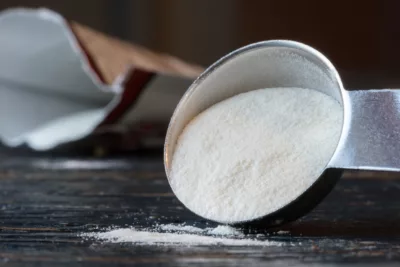Xanthan gum is important to many of the products we know and love. It is a high molecular weight polymer, which is used in a wide variety of food and drink applications. As is it a cold soluble gum that provides thickening and suspension you can find it in products such as processed beverages, salad dressings, sauces, relishes, syrups, ice cream, baked goods and more.
Current Xanthan Gum Shortages
There is currently a significant shortage of xanthan gum globally. There have been serious disruptions to the xanthan gum supply chain recently, chiefly due to energy policies in China. China, one of the largest sources of xanthan gum globally, imposed restrictions on producers forcing them to run well below capacity. This has in turn led to prices increasing. Luckily, since the beginning of this year, Chinese manufacturers have been able to return to producing at more standard levels. This should help to improve the shortage but will not solve the problem entirely. High shipping costs and shipping delays will also continue to cause issues, but we expect the supply of xanthan gum to return to relative normalcy within the next 6 months or so.
How Xanthan Gum Works
In the meantime, while lack of supply is still an issue there are a few alternatives you can consider using. To understand what alternatives may work for you, first, you need to properly understand how xanthan gum functions. Xanthan provides excellent suspension for insoluble solids and oil droplets and disperses in the aqueous phase of formulations. As such many forms of xanthan gum do not require high shear to mix into a solution. As well as this, it has pseudoplastic flow properties which makes it very easy to pump, spray, mix and homogenise. If the application uses salt and acid, xanthan gum can still work given that it is tolerant to both of these. And if you are working with an aqueous solution containing alcohol, xanthan can remain stable as long as the alcohol levels are below 60%. Beyond these benefits, xanthan also has a synergistic effect when used with nearly all galactomannans, carrageenan and some starches. In fact, when used in combination with LBG and Konjac gum it can form elastic thermoreversible gels.

Potential Replacements
With this in mind, there are a few potential alternatives to using xanthan gum. That being said, it is important to emphasise that there are no perfect 1:1 replacements that have exactly the same properties. We would suggest that you look into using either:
- Guar gum
- Tara gum
- LBG
- Konjac gum
- Starch
- Pectin
- Carrageenan could also be used in some applications.
Whether these alternatives would work is very dependent on the application in question. You’ll need to consider the desired viscosity, clarity, pH, heat stability and processing stability when deciding which alternative could work best. The good news is that one of these replacements, or a combination of them, is bound to work in almost all applications.
In terms of the cost of using these replacement products, there are some important points to consider. Firstly, given the LBG pricing crisis, we wouldn’t recommend using LBG at this current moment. Tara gum is also on the costlier side of the equation right now. On the other hand, guar gum and starch can be very cost-effective replacements, but this does come at the cost of a slightly cloudy appearance.
How Can We Help?
As we’ve seen throughout this article, replacing xanthan gum isn’t necessarily a simple process. Because finding the right replacement is so application dependent, we would suggest working in partnership with technical experts to find the right solution.
At Hawkins Watts, we have an experienced and passionate technical team who can work directly with you on your project. So, if you’re looking for help finding an appropriate xanthan gum replacement, we are always happy to have a chat and help you find the best solution.
Australia
Celia McKeon: celia@hawkinswatts.com.au
New Zealand
Alan Bulmer: alan@hawkinswatts.com




